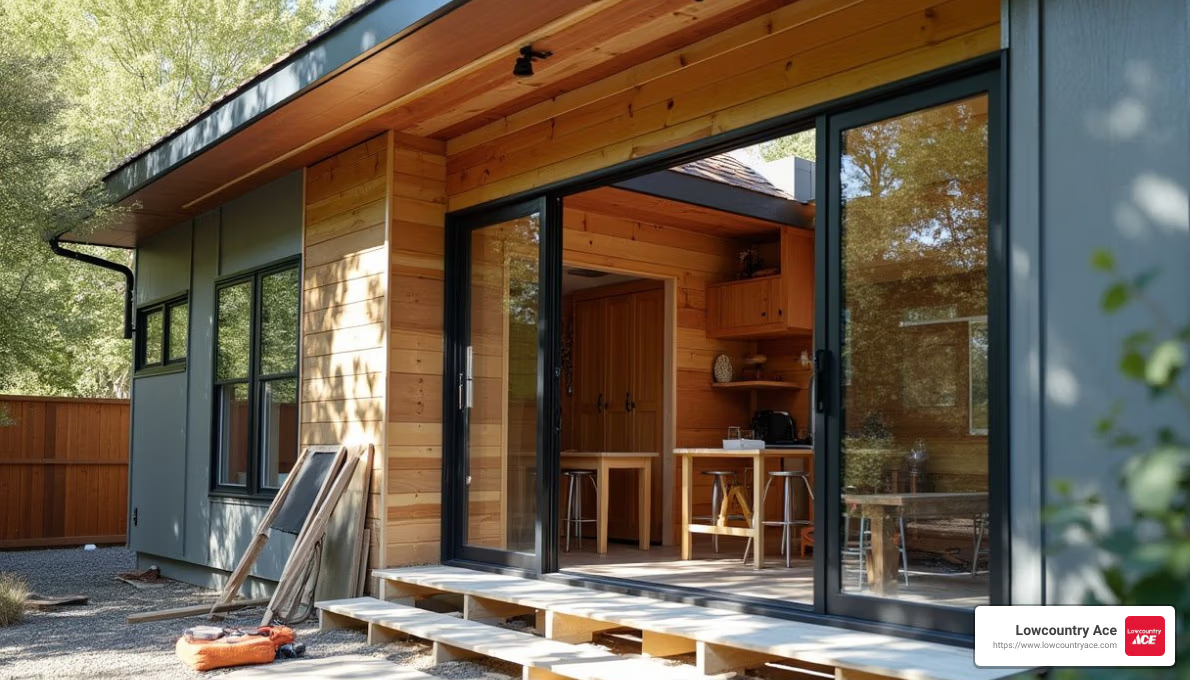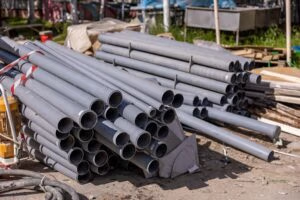Why Knowing DIY Home Addition Costs Is Crucial
DIY home addition cost is a topic of great interest to homeowners wanting to expand their living space without breaking the bank. Here’s a quick summary for your search intent:
- Average Cost: Costs vary widely—from around $10,000 for a basic room to over $200,000 for complex additions like a second story.
- Financing: Options include personal loans, home equity loans, and HELOCs with varying interest rates.
- Unexpected Costs: Plan for hidden costs like structural issues and weather delays.
Thinking of adding a room to your home? Or maybe expanding your kitchen? Either way, understanding the DIY home addition cost is your first step. Proper planning can help you avoid financial pitfalls and ensure a smooth project.
Expanding your living space improves comfort and can boost your home’s market value. To make informed decisions, you need to know the potential costs and how to budget effectively. This includes not just the obvious expenses like materials and labor but also hidden costs such as permits or unexpected structural issues.
I’m Haiko de Poel, Jr, and I bring experience in home addition costs and financial planning. I’ve helped numerous clients in optimizing their home improvement projects. My expertise will guide you through understanding the costs involved, planning your budget, and ensuring you get the best value for your investment. Now, let’s dive deeper.
Essential diy home addition cost terms:
– DIY home improvement
– diy home addition
Understanding DIY Home Addition Costs
When planning a home addition, understanding the costs involved is crucial. Let’s break down the DIY home addition cost and see how you can budget effectively.
Cost Breakdown
Adding square footage to your home generally costs between $200 to $600 per square foot. The average cost in South Carolina is about $260 per square foot. However, the final cost depends on various factors such as the type of room, materials used, and labor costs.
Labor
Labor is one of the most significant expenses in a home addition project, often making up 40-50% of the total budget. Here are some typical labor costs:
| Labor Type | Average Cost |
|---|---|
| General Contractor | 10%-20% of project |
| Architect | $125-$250 per hour |
| Plumber | $45-$200 per hour |
| Electrician | $50-$100 per hour |
| HVAC Expert | $50-$150 per hour |
| Painter | $20-$50 per hour |
Source: Angi
Materials
The cost of materials can take up another 30-40% of your budget. Your choice of materials will have a significant impact on the overall cost. Here are some average prices:
| Material | Average Price |
|---|---|
| Paint | $20-$70 per gallon |
| Drywall | $0.40-$0.65 per sq. ft. |
| Concrete | $5.50-$9 per sq. ft. |
| Framing | $4-$17 per sq. ft. |
| Insulation | $0.40-$6.75 per sq. ft. |
Design and Permits
Hiring an architect or designer typically costs 5-10% of the total budget. Permits and fees can add another 1-5%. These costs ensure that your project meets local building codes and regulations.
Contingency Fund
Always set aside a contingency fund of 10-15% of the total budget for unexpected expenses, such as finding hidden structural issues or dealing with weather-related delays.
DIY vs. Hiring a Contractor
Deciding whether to DIY or hire a contractor is a big decision. Both options have their pros and cons.
Pros and Cons
DIY Pros:
– Cost Savings: You can save on labor costs.
– Control: You have full control over the project.
DIY Cons:
– Time-Consuming: DIY projects can take longer to complete.
– Skill Level: Requires a certain level of expertise.
– Safety Risks: Potential for accidents or mistakes.
Hiring a Contractor Pros:
– Expertise: Professionals bring experience and skills.
– Speed: Projects are generally completed faster.
– Quality: Higher quality of work and adherence to building codes.
Hiring a Contractor Cons:
– Cost: More expensive due to labor costs.
– Less Control: Less direct control over the project.
Safety and Building Codes
Safety and adherence to building codes are critical. DIY projects carry the risk of accidents, and improper work can lead to code violations. Hiring professionals ensures that the work meets all safety standards and building regulations.
Understanding these factors will help you make an informed decision about whether to tackle the project yourself or hire a contractor.
Next, we’ll explore the types of home additions and their costs, helping you choose the best option for your needs and budget.
Types of Home Additions and Their Costs
Bump-Out Additions
A bump-out addition is a small extension that increases the size of an existing room. Typically, it adds 2-3 feet to a room, making it more spacious without the cost of a full addition.
Cost Range: $3,300 – $20,000
Benefits: Increases living space, relatively low cost, can be financed with cash or small loans.
Limitations: Limited in size, may not add significant value to the home.
Sunroom Additions
A sunroom is a versatile space that brings the outdoors inside. Sunrooms can be three-season or four-season, affecting their usability and cost.
Cost Range:
– Three-Season: $25,000
– Four-Season: $45,000
– Prefab Options: Starting at $5,000
Seasonal Use: Three-season sunrooms are not insulated for winter, while four-season sunrooms can be used year-round.
Prefab Options: Prefab sunrooms are more affordable and quicker to install but offer less customization.
Home Office Additions
With more people working remotely, a home office addition is increasingly popular. It can also serve as a dual-purpose room, such as a guest bedroom.
Cost Range: $18,000 – $35,000
Dual-Purpose Rooms: Can be listed as a bedroom, increasing resale value.
Resale Value: Home offices can make your property more competitive and appealing to buyers.
Laundry Room Additions
A laundry room adds convenience and organization to your home. It’s a highly desired feature among homebuyers.
Cost Range: $5,000 – $8,000
Popular Features: Counter space, storage cabinets, utility sink.
Resale Value: High demand among buyers, making it a worthwhile investment.
Mudroom Additions
A mudroom is a functional space for storing outdoor gear and keeping your home clean. It’s especially useful in regions with harsh weather.
Cost Range: $10,000 – $14,000
Utility Features: Can include a utility sink, washer, dryer, and HVAC connection.
Regional Considerations: More valuable in areas with heavy snowfall or rain.
Next, we’ll explore the cheapest ways to add square footage to your home, focusing on building out versus building up.
Cheapest Ways to Add Square Footage
Building Out
When considering a DIY home addition cost, building out is often the most budget-friendly option. This means extending your home’s footprint horizontally by adding to the existing structure.
Foundation Costs: One of the biggest expenses when building out is laying a new foundation. According to research, foundation costs range from $4 to $100 per square foot, depending on the type of foundation you need. This can add up, but it’s still often cheaper than the structural adjustments needed for building up.
Yard Space: Building out will eat into your yard space. If you have a small backyard, this could be a significant drawback. Always consider how much outdoor space you’re willing to sacrifice.
Zoning Limits: Before you start, check local zoning laws. Some areas have strict regulations about how much of your lot can be built on. This will determine how far you can extend your home horizontally.
Building Up
Building up involves adding another story to your home. This can be a great way to increase square footage without losing yard space, but it comes with its own set of challenges and costs.
Roof Removal: To build up, you’ll need to remove the existing roof. This can be a complex and costly process. Additionally, your home will be exposed to the elements during this phase, which may require temporary weatherproofing.
Staircase: Adding a second story means you’ll need a staircase, which takes up space and adds to the cost. The design and placement of the staircase can also impact the flow of your home.
Temporary Housing: Building up is more disruptive than building out. You might need to move out of your home for a period, which can add to your overall expenses. Temporary housing costs can vary widely based on your location and the size of your rental.
Cost-Effective Strategies: Whether you’re building out or up, there are ways to keep costs down. Using standard materials and designs, handling some of the work yourself, and getting multiple bids from contractors can all help reduce expenses.
Budgeting for a DIY Home Addition
Planning and Design
When it comes to managing your DIY home addition cost, planning and design are crucial. Start by setting a realistic budget. Factor in all potential expenses, including materials, labor, permits, and a contingency fund for unexpected costs. A well-thought-out budget can prevent financial surprises down the road.
Efficient Design: Optimize your space to get the most out of every square foot. For example, if you’re adding a home office, consider dual-purpose furniture that can also serve as storage. This not only saves space but also reduces the need for additional materials.
Space Optimization: Think about reusing existing materials. Salvage doors, sinks, or even furniture from other parts of your home. This can add character to your addition while keeping costs down.
Getting Multiple Bids
Before you commit to a contractor, get multiple bids. This allows you to compare costs and services. It also gives you a chance to negotiate for a better price.
Comparing Costs: Look at the breakdown of each bid. Some contractors might offer lower labor costs but charge more for materials. Understanding these details can help you make an informed decision.
Negotiating: Don’t be afraid to negotiate. Contractors often have some flexibility in their pricing. You might be able to get a discount or additional services included for the same price.
Assessing Contractors: Beyond cost, assess the contractor’s experience and reputation. Check reviews and ask for references. A reliable contractor can save you money in the long run by avoiding costly mistakes.
Standard Finishes
Choosing standard finishes can significantly reduce your DIY home addition cost. High-end materials are tempting, but there are plenty of cost-effective alternatives that look great and perform well.
Cost-Effective Materials: Opt for materials like vinyl planks instead of hardwood floors. Vinyl is durable, easy to install, and much cheaper. Similarly, consider laminate countertops instead of granite or marble.
Vinyl Planks: These are a fantastic alternative to expensive flooring options. They offer the look of wood at a fraction of the cost and are easy to maintain.
Alternatives: Look for synthetic or prefabricated materials. They often mimic the appearance of more expensive options but come at a lower price. For example, engineered stone can be a cost-effective substitute for natural stone.
By focusing on efficient design, getting multiple bids, and choosing standard finishes, you can manage your DIY home addition cost effectively. This approach ensures you get the most value for your money while creating a functional and beautiful space.
Frequently Asked Questions about DIY Home Addition Costs
Do I need building permits, and do they add to the cost?
Yes, you’ll likely need building permits for your home addition. Permits ensure that your project complies with local building codes and regulations, which is crucial for safety and resale value.
Local Regulations: Building codes vary by location, so it’s essential to check with your local government or building department. They’ll inform you about the specific permits required for your project.
Permit Fees: The cost of permits can range from $50 to several hundred dollars, depending on the scope of your addition and local fees. While it might seem like an added expense, skipping permits can result in fines and complications when selling your home.
Should I hire an architect or designer, and how does that affect the budget?
Hiring an architect or designer can improve the quality and functionality of your home addition, but it does add to the overall cost.
Professional Fees: The fees for architects and designers can vary widely. On average, expect to pay between 5% and 20% of the total project cost. This might seem steep, but their expertise can help you avoid costly mistakes.
Design Quality: A professional can optimize your space, ensuring that every square foot is used effectively. They can also help you steer building codes and zoning laws, which can save time and money in the long run.
Are there tax incentives or rebates for certain types of home additions?
Yes, there are often tax incentives and rebates available for energy-efficient home improvements. These can help offset some of the costs of your addition.
Energy-Efficient Upgrades: Installing solar panels, energy-efficient windows, or improved insulation can qualify for federal, state, or local incentives. These upgrades not only reduce your energy bills but can also make you eligible for tax credits.
Local Incentives: Incentives vary by location. Check with your local government or utility company for available programs. Websites like the Database of State Incentives for Renewables & Efficiency (DSIRE) provide comprehensive information on local incentives.
By understanding the need for permits, the value of professional design, and the potential for tax incentives, you can better manage your DIY home addition cost. This knowledge helps you plan effectively and make informed decisions that save money and improve your home’s value.
Conclusion
Adding a new space to your home can be a rewarding project, both in terms of functionality and increased property value. However, plan carefully and understand all the costs involved to avoid any financial surprises.
Summary
When planning a DIY home addition, consider all aspects, including labor, materials, permits, and the potential need for professional help. Building out is generally cheaper than building up, but each option has its own set of challenges and costs.
Budgeting Tips:
– Efficient Design: Optimize your space to avoid unnecessary costs.
– Reuse Materials: Salvage and reuse existing materials where possible.
– Get Multiple Bids: Compare costs from different contractors to get the best deal.
Long-Term Value
Investing in a home addition can pay off in the long run. Not only does it provide immediate additional space, but it also increases your home’s resale value. Energy-efficient upgrades, like better insulation or solar panels, can further improve this value by reducing energy costs and qualifying for tax incentives.
Helpful Team at Lowcountry Ace
At Lowcountry Ace Hardware, we understand the complexities of home improvement projects. Our knowledgeable team is here to help you every step of the way. Whether you need advice on materials, tools, or even just a friendly consultation, we’re committed to making your DIY project a success.
Visit Us Today: Located at the Riverland Market on Folly Road, we serve the James Island and Folly Beach areas with a wide range of products and services, including home delivery.
Thank you for choosing Lowcountry Ace for your home improvement needs. Let’s make your home addition project a remarkable one!
For more information and expert advice, visit Lowcountry Ace Hardware. Together, we’ve got this!
Lowcountry Ace Hardware: Your one-stop shop for home improvement. We offer quality products from trusted brands and expert advice from our experienced staff. Located on James Island, visit us for tools, hardware, fishing gear, power tools, building materials, grills & smokers, electrical and plumbing supplies, and more.






